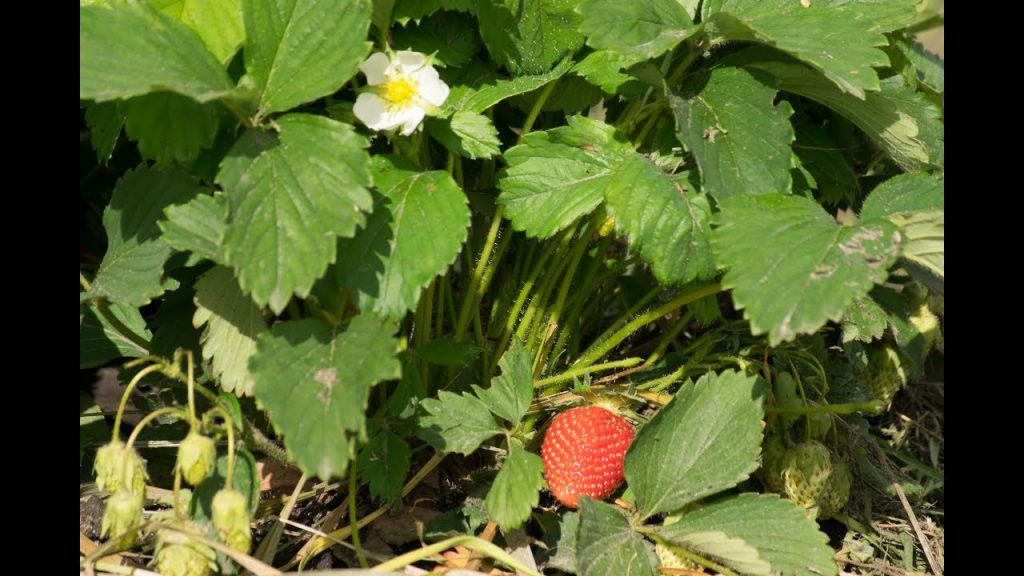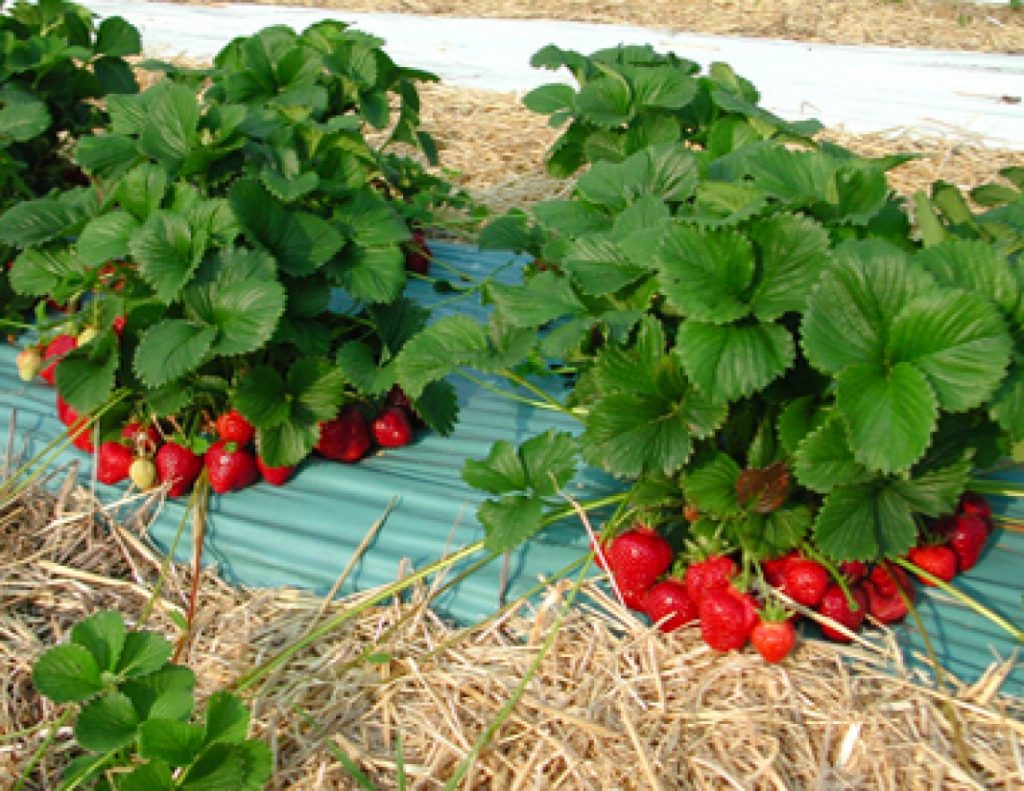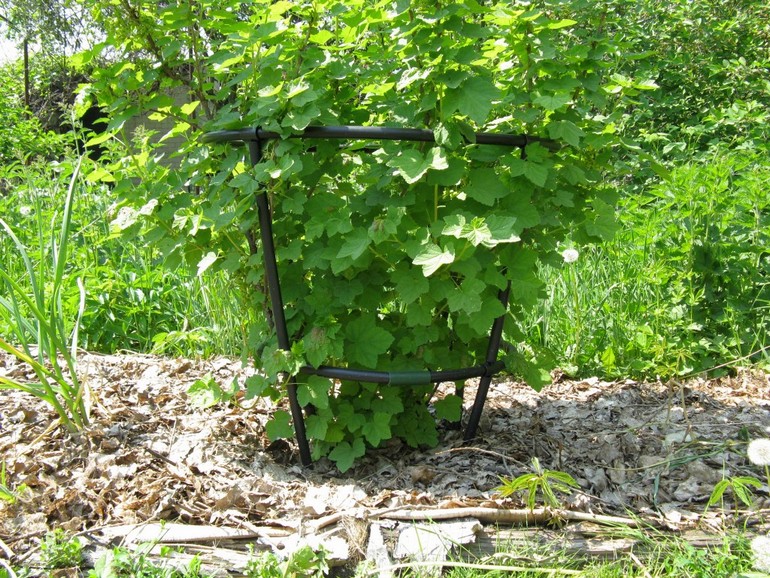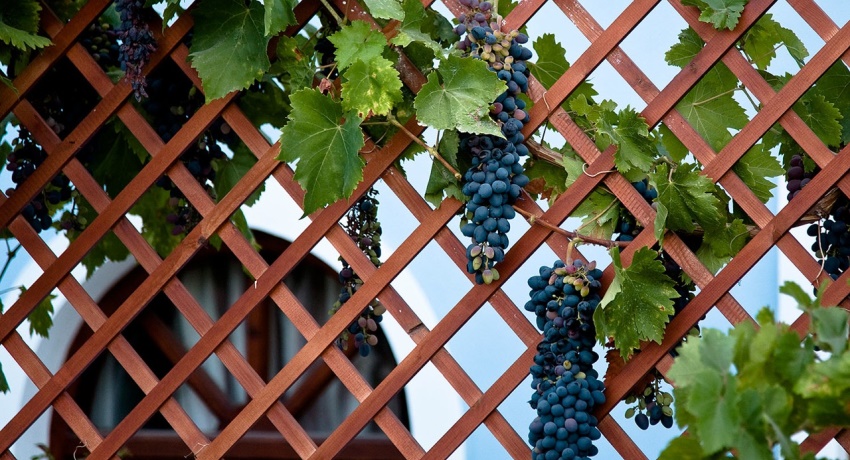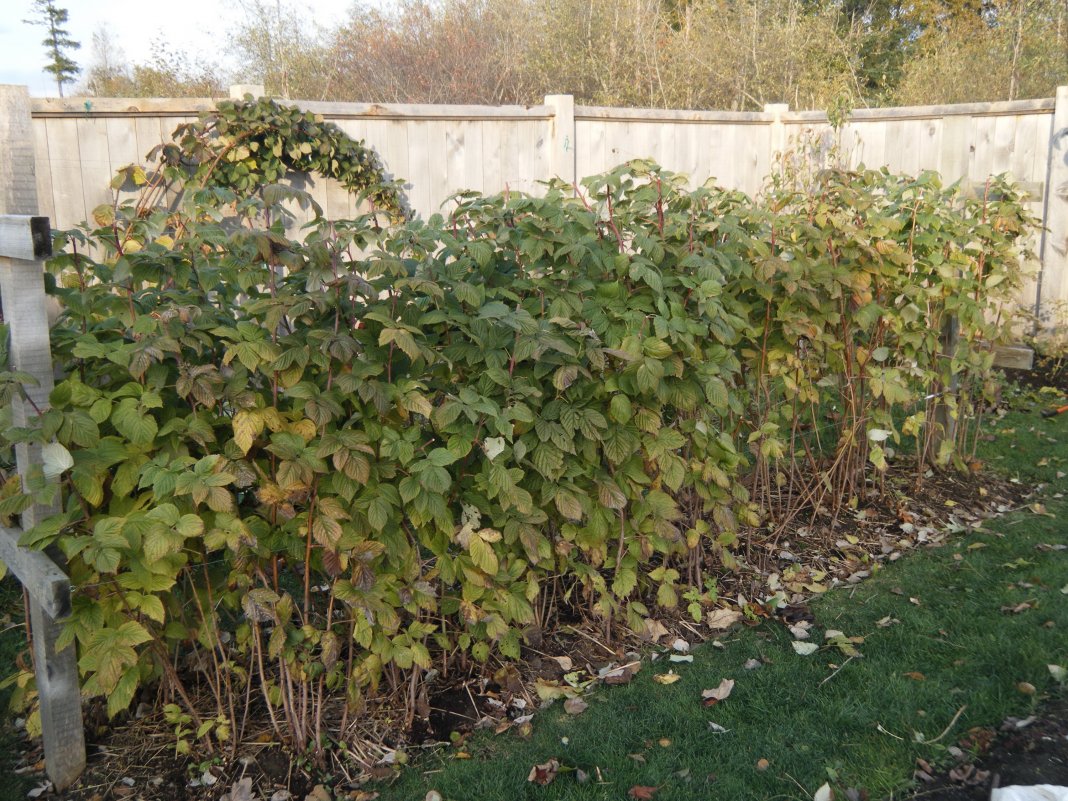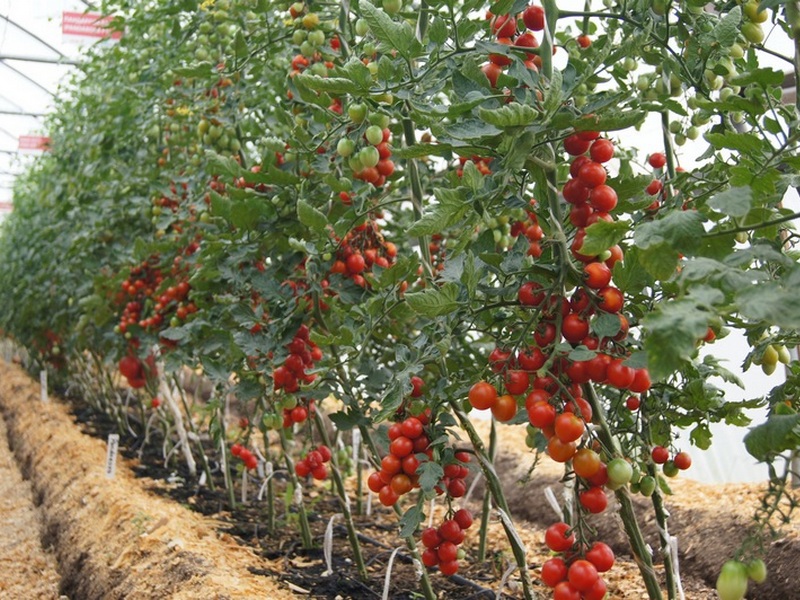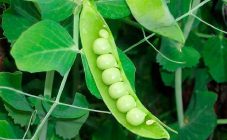Berries lying on the open ground become an easy target for diseases and parasites, they can rot. The most famous disease, gray rot, affects strawberries on the ground and makes them unfit for human consumption. Slugs also eat more berries on the ground. Strawberries on the ground get dirty easily, and it is difficult to wash them, the berries are too soft and easily deformed, which is why they can quickly rot during storage.
One way to combat dirt, parasites, and rot is by tying up the bushes to keep the strawberries off the ground. The stems of the plant are too thin to hold heavy fruits off the ground, they are tied to supports or a long mustache is tied in such a way that they support the stems. Tying keeps the berries in weight, prevents them from getting dirty and rotting
The obvious disadvantage is labor input. If there are more than 10 bushes on the site, the process can be time-consuming.
However, this method also has advantages - in addition to protection from decay and pests. The ground under the bush is open to sunlight and air, warms up quickly in spring and receives a sufficient flow of air.
How to preserve strawberries
How to protect strawberries or strawberries depends on the specific conditions. For a small area, coasters are well suited; for a large plantation, you need to use a technique - a bed former.
- The stands help to lift the fruit off the ground, like tying it up. There are factory ones, they are sold in specialized stores for summer residents. There are homemade ones - they can be made from aluminum wire or plastic bottles. The lack of coasters, both factory-made and home-made - you have to tinker with every bush. Dignity - you don't have to think about what to put under the strawberries so as not to rot.
- The traditional method is mulching. The soil under the bushes is covered with dry straw or wood shavings to prevent contact with the ground. The method protects the soil from drying out - moisture evaporates more slowly under the mulch. However, berries lying in straw dry out more slowly than those hanging in the air and can rot. In wet weather, you need to find what to put under the berries so that they do not get dirty.
- Film. A more modern version of mulching. A special film allows moisture to pass through, but does not transmit sunlight. The great advantage of this method is that weeds under the film do not grow or grow very weakly. The berries on the film do not get dirty and are protected from rot. The disadvantage of this method is that it is more difficult to water the bushes, and in a rainy summer, the film can cope with moisture too slowly, the fruits can get wet. With this method, in rainy weather, dirt can also appear on the film. It is worth doing something to prevent the strawberries from lying on the ground.
- Berry linings. It doesn't really matter what to put under the strawberries so that they don't rot. It can be slate, wooden blocks, pieces of cardboard - everything that can be found on the farm. It is important to keep the material dry and turn it over from time to time to prevent slugs from forming. This method works well when you need to somehow save strawberries from rot due to excess rain.
- Garter. With this method, the stems and shoots are tied to the bush itself or to the support. The principle is similar to that used in the stanchions - the berries are lifted off the ground. Unlike the props method, you do not have to tinker with each bush separately, although there is still quite a lot of work.
For large strawberry plantations, bedding and manual mulching will be too slow and therefore ineffective.A special device - a bed former - forms a bed and immediately covers it with a film.
You can find many descriptions of structures - with different widths of the ridge, for a walk-behind tractor or a tractor. In a small workshop, the strawberry bed former can be assembled by hand.
Tying
Because of the extra rains, you need to somehow save the berry from rot. Special designs allow you to simplify the tying process, not to deal with each bush separately. A simple and convenient way is with a stretched rope. The following describes how to tie up strawberries.
- Drive 2 pegs at the beginning and end of the bed - they should be on both sides of the bed. The stakes should sit well in the ground to withstand the tension on the rope and the weight of the fruit.
- On the sides, you need to pull the ropes and tie them on stakes. Can strawberries be tied up with a plastic cord? It is better to use natural fiber rope, but this does not matter much. The rope should be tight enough to lift the berries well, otherwise they can rot.
- If the beds are long and there is still sagging, you will have to tie additional props. Such props can be just small branches with a slingshot at the end.
- Shoots with ovaries are thrown over ropes on both sides in such a way that the berries, when they become heavy, do not touch the ground. This is the most time-consuming stage that requires attention and a thorough approach.
It is important to tie the strawberries in the beds as evenly as possible. The method is quite simple and will reliably protect against rot and dirt, you do not have to think about what to put under the strawberries so as not to get dirty.
How to tie up strawberries if they are not planted in beds? You will have to tie each bush separately, otherwise it will rot in wet weather. The easiest way is to use the long whiskers of the plant itself.
How to grow strawberries correctly
This is a demanding culture. Dislikes soil that is too wet or too dry, can grow acidic or shallow. These tips will help you avoid common mistakes and get a good harvest.
- When planting, you need to cut off all the leaves, leave only 2 young ones. A large amount of foliage will weaken or suckle the plant during the rooting period.
- You need to change the place every 3 years. At 4 years old, the bushes become too old, the yield decreases sharply. If conditions permit, it makes sense to add a new bed every year and remove one with old bushes.
- Strawberries will grow well after onions, garlic, radishes, carrots, beets, lettuce, parsley, spinach, dill, celery, peas, beans, beans.
- Potatoes, tomatoes, cucumbers and pumpkin suffer from the same diseases as strawberries and strawberries and will be bad predecessors.
- How to keep strawberries from rotting in the rain? So that the water does not stagnate, the beds should be done with a certain slope, 2 degrees is enough. In too wet soil, gray rot appears, and the berries lose their taste.
- From feeding with organic fertilizers, leaves and tendrils actively grow, but the berries develop poorly. The correct way is to apply fertilizer 3-4 months before planting. But it is best if the strawberry predecessor was fertilized in this area.
Caring for this capricious culture requires attention and patience. Berries lying on the open ground are easily affected by diseases, rot, get dirty. Tying bushes is a good way to avoid this. The time and effort spent will pay off in the best way when it comes time to harvest.
